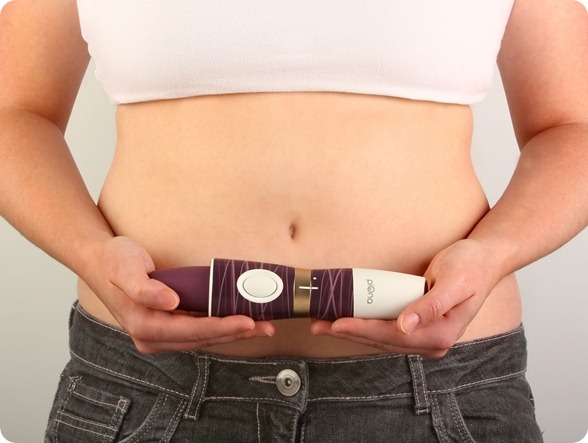Nov 12 2012
A new auto-injector concept has been designed by innovative product development firm Cambridge Consultants in a bid to ease the trauma for women undergoing fertility treatment. The piOna device has been developed to help patients who need regular injections of progesterone in oil (PiO). The daily intra-muscular injections are often the most dreaded and stressful part of the IVF process as they involve a large and long needle and typically take the patient more than a minute to administer due to the viscosity of the oil.

Progesterone supplements are a vital part of fertility treatment as the hormone helps sustain the pregnancy to full term. The supplements usually take the form of pills or suppositories. But in some cases women need higher doses of the hormone – which involves regular self-administered injections. The intimidating and complex nature of the injections, however, means some patients are unable to administer the PiO properly or delay or miss injections, which can lower the success rate of the fertility treatment.
The PiO injections involve warming the oil to make it less viscous and then using a syringe fitted with a 22-gauge (1.5-inch) needle to inject the progesterone deep into the muscle. Patients often find it difficult to find the right angle, speed and temperature to ensure correct and painless drug delivery.
The new auto-injector concept guides the patient though the injection process – with audible, visual and tactile signals at each stage and the needle hidden from view – reducing the injection duration by up to 30%. The piOna device automatically warms the oil to the optimum temperature, and its ergonomic and intuitive design makes it easy to hold and use – even for awkward posterior injections. Once the device has made contact with the skin, only a small downward pressure is required to trigger the auto-injection. The technology could also be used for other viscous drugs that need to be self-injected.
As well as being faster and easier to use, the new piOna device could help reduce the amount of swelling and additional side effects around the injected area that patients have to endure. By automating the temperature and injection speed of the PiO, it will help the solution dissipate when it enters the body.
Lai Chiu Tang, senior industrial designer at Cambridge Consultants, said: “Fertility treatment is a very stressful and difficult process for a woman to go through and – after discussions with fertility nurses – we felt it was important to tackle the usability issues of self-administered PiO injections. Providing women with the confidence to administer a drug dosage without fear of unnecessary pain and stress will open doors to this technology platform being used in all manner of drug delivery. Improving the user experience will help women all over the world to gain access to health opportunities which were previously perceived to be unobtainable.”
One of Boston Medical Center's IVF affiliates – the Reproductive Science Center – handles more than 2,800 assisted reproduction cycles per year. “Every one of our patients takes progesterone as part of their infertility treatment,” said Wendy Kuohung, MD, associate professor of obstetrics and gynecology at Boston University School of Medicine, whose practice sites include the Reproductive Science Center and the Boston Medical Center. “There are various methods to administer progesterone and, in certain situations such as frozen embryo transfer cycles, intramuscular injection is still considered the most effective route of delivery.
“Patients may self-administer up to 70 injections during the course of treatment. Already burdened by the stress of infertility, our patients universally find the current manual injection method difficult, painful and anxiety-provoking. After seeing this auto-injector prototype, I have to say that I'm impressed as I believe any innovation in this area will be a great benefit to my patients.”